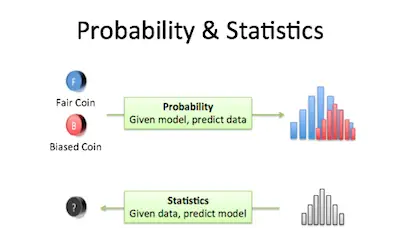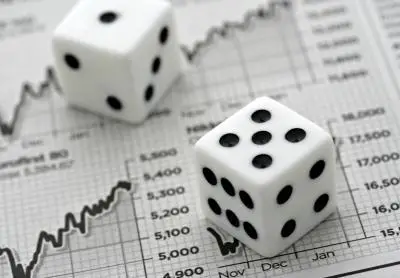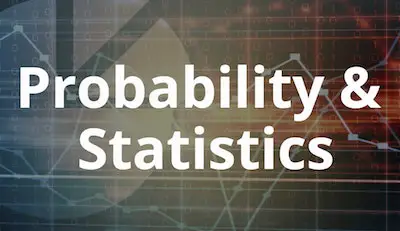Introduction To Probability And Statistics
There’s no question that probability and statistics are related. Ultimately they can both deliver the answers to questions such as:

- How likely are you to flip a coin and it lands on its edge?
- How likely is that you wear a blue shirt today?
Among others.
Discover the best stats calculators.
Probability

Simply put, the probability is the likelihood of something happening. This “something” is called an event.
For example, let’s say that you’re playing Dungeons & Dragons. When you roll a D20, getting a 20 is a very good thing most of the time. However, everyone says that this is extremely rare. Yet, in reality, it is just as likely to roll a 20 as a 1. Let’s figure out why.
Complete overview of the most common probability math problems.
When you are trying to figure out probability (P), you are trying to figure out the chance of an event occurring. The probability of an event occurring is usually written as P(event).
In the case of our D&D dice when you roll it you have these outcomes
S = {1, 2, 3, 4, 5, 6, 7, 8, 9, 10, 11, 12, 13, 14, 15, 16, 17, 18, 19, 20}
This means that the likelihood of rolling a number 1 – 20 is 100% while the likelihood of rolling a 21 is 0%. But the events in between are a little different.
Probability is calculated as the total number of desired outcomes ÷ total number of possible outcomes.
Getting Back At Our Example
As we already mentioned above, there are 20 total possible events that can occur on a single roll of a fair D20.
At this time, we are only interested in one of them, 20. Since it is one of 20 possible outcomes:
P(20) = 1/20 = 0.05.
We also already mentioned that it has the same likelihood of a 1 being rolled:
P(1) = 1/20 = 0.05.
Now, rolling a number less than twenty is different. This would be:
P(1, 2, 3, 4, 5, 6, 7, 8, 9, 10, 11, 12, 13, 14, 15, 16, 17, 18, 19) = 19/20 = 0.95
As you can see, it is much more likely.
Summing up, rolling a D20 and getting a 20 is just as likely as rolling a 1. However, the reason 20s are so rare is that you are much more likely to roll a number less than 20.
What is the probability theory?
Statistics

As you already know, statistics is the application of the laws of probability to real, actual data.
If you take the D20 example, this would be when you roll the dice 20 times and collect some data.
When you apply probability to real data, you are trying to determine if the outcome is significantly different from a model that you are generating.
For example, the P(20) = 0.05, so let’s explore that.
Check out our binomial probability calculator.
When you collect data, there are several ways to describe the data that you take. The most common are mean, median, and mode. In the case of statistics, we want to see if our actual data conforms to the model. There are two ways to do this:
#1: Classical Inference:
Classical inference deals with data that have a fixed probability based on the number of cases and events.
#2: Bayesian inference:
Bayesian inference deals with data whose probability is not fixed. That is, the probability is subject to change based on other factors.